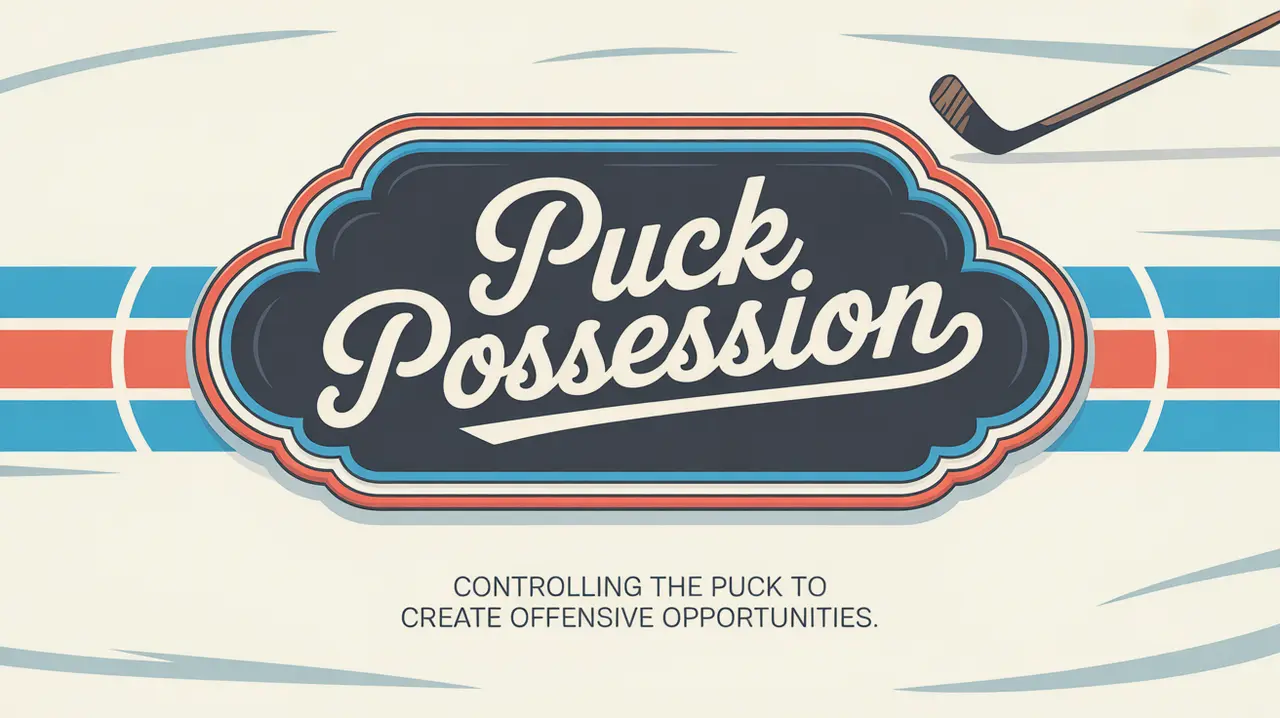Jim’s Intro to Puck Possession
Hi folks, Jim here, the only commentator who once tried to count puck possession manually with a stopwatch and ended up falling asleep. Who knew pucks and sheep have the same effect on me.
What is puck possession?
Puck possession is the ability of a team to control and maintain the puck during play. It’s not just about having it, but about using it effectively to dictate tempo, create scoring chances, and limit the opponent’s opportunities. Teams that dominate possession often control the flow of the game, wear down defenders, and generate sustained offensive pressure.
How does it work?
Puck possession involves a combination of skill, structure, and decision-making:
- Controlled Exits and Entries: Teams use structured breakouts and clean zone entries to retain the puck while moving up the ice.
- Support and Spacing: Players position themselves to give the puck carrier multiple passing options.
- Puck Protection: Strong stickhandling, body positioning, and board work help maintain control under pressure.
- Quick Decisions: Smart passes, well-timed shots, and decisive plays keep defenders reacting.
- Cycling and Low Play: Sustaining possession in the offensive zone often involves cycling the puck along the boards and behind the net to create openings.
- Neutral Zone Control: Smart play between blue lines limits turnovers and sets up structured attacks.
How do you make good decisions with it?
- Keep Your Head Up: Awareness allows players to anticipate pressure and find smart options.
- Value the Puck: Limit risky passes and unnecessary dumps when control is possible.
- Use Support: Rely on teammates rather than forcing solo plays through defenders.
- Recognize When to Reset: Pulling back to regroup is often smarter than a low-percentage attack.
- Communicate: Clear signals between players reduce turnovers and rushed plays.
How do you master it?
Mastering puck possession comes through discipline, structure, and trust. Teams practice controlled breakouts, cycling patterns, and transition drills to make puck movement instinctive. Players learn to protect the puck with their bodies, handle pressure, and make high-IQ plays under speed. Good teams treat possession like gold and rarely give it away cheaply.
What does it look like when done right?
When puck possession is clicking, it looks effortless. The puck moves quickly, defenders are constantly reacting, and attackers sustain pressure shift after shift. In the neutral zone, turnovers are rare. In the offensive zone, the cycle feels endless until a scoring chance appears.
Commentator’s Corner
Jim’s Take
I’ve seen teams with less talent outplay favorites just by hanging onto the puck like it was the last slice of rink pizza. Possession changes everything.
Parent Tip
Encourage young players to focus on making smart plays, not just fast ones. Good possession habits build game intelligence early.
Player Tip
Protect the puck with your body, keep your head up, and make the simple play. Possession is power.
A Final Thought
Puck possession isn’t flashy on its own, but it’s the foundation of winning hockey. Control the puck, control the game.









